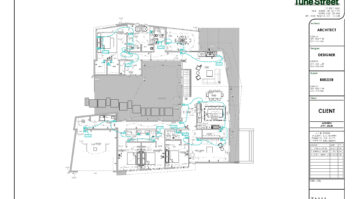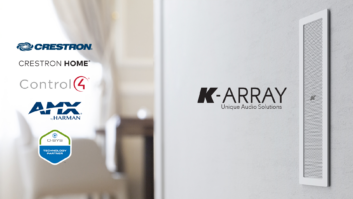How many times have you experienced it? That feeling that none of the builders, architects, or designers in your market take the profession of home technology seriously. It’s a common refrain from many in the industry, and one that I’ve experienced first-hand as a former integrator.

Using emotional intelligence can help diffuse business conflicts. (ThinkStock image)
Many blame the absence of any real barrier to entry in this line of business. It’s hard to deny that the ease with which someone can call themselves a home technology pro has led to some real black eyes for the trade. However, while technical proficiency and craftsmanship are certainly a missing ingredient for many so-called “trunk slammers,” there is an arguably bigger offense that many of the home tech industry’s bottom-feeders are guilty of: a complete lack of emotional intelligence.
Emotional intelligence (abbreviated as EQ) is defined as “a form of social intelligence that involves the ability to monitor one’s own and other’s’ feelings and emotions, to discriminate among them, and to use this information to guide one’s thinking and action.”
I’ve written before about using emotional intelligence to excel in client service. [http ://onevisionresources.com/using-emotional-intelligence-excel-customer-service /] It turns out that EQ is an equally effective skill for enhancing relationships with your market’s most important trade partners (architects, designers, and builders.)
Every integrator has dealt with their share of tough interactions with such partners. The ability to recognize and control the emotional elements of such situations can mean the difference between a desirable outcome for all parties, or one that simply leaves you looking like the “tech guy” who does nothing but make the project more difficult.
An architect emails you upset about the spatial and cooling requirements that you recently submitted for your AV head end. Knowing the long-term implications to the system’s performance and serviceability if your requests are not met, do you fire off a defensive reply attempting to draw a hard line?
An interior designer reads you the riot act when they find out that your contract with the client includes a TV over their showcase fireplace. The TV placement was actually the client’s idea, but that seems of little significance to the designer, and you’ve just been called to the carpet to explain yourself. Do you let your frustration steer the conversation, throwing your hands up and telling them to go sort it out with the homeowner?
A general contractor on one of your projects is livid because a client change to the lighting control system means that the project’s electrician has to rewire numerous switches in parts of the home where the drywall just went up. You dig up a saved email thread where you tried to avoid this situation by explaining the need for a timely decision to the client six months ago. Do you forward it to the GC, and recuse yourself from any further discussion about the matter?
Far more than technical expertise alone, navigating such difficult situations with a high degree of EQ will truly separate you from the low-end operators in your market. First, by allowing you to recognize and acknowledge the all-important underlying emotions underlying the situation. Then by enabling to you to exert more control over your own response.
Immersed in a never-ending amount of project details, the architect’s immediate reaction might be driven by the overwhelming implications of your request, of which you have no knowledge. Driven by a grand vision, the interior designer may be deeply frustrated that the weeks they spent revising detailed elevations of the fireplace may have been for naught because, as they see it, you convinced the client that it was a great place for an 85-inch TV. And the builder may be feeling deep angst because the holes now being cut in the drywall are likely to cause a serious domino effect to their timeline, perhaps even impacting their ability to get paid.
Recognizing these emotions will allow you to not only openly acknowledge them (greatly diffusing the situation), but will also allow you to more easily control your own response. Instead of countering with frustration of your own, you can assume a calm posture and willingness to take the lead on finding the most desirable outcome for all parties involved — something few, if any, trunk slammers in your market will be able to do.
Many integrators regularly find themselves swimming upstream, fighting to dispel an image of the home technology professional that has been sullied by a lack of professionalism by low-end operators in their market. Looking to differentiate their businesses, they put emphasis on factors such as technical prowess and years in business. But if you’re looking to build or maintain a reputation for professionalism amongst the design/build community in your market, then leveraging EQ is every bit as important as technical expertise.







